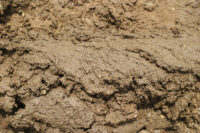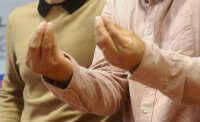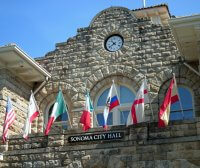If you’re wondering why modern life seems dominated by discussion of fiscal cliffs, taxes and money, look no further than the origins of Western civilization. For roughly 10,000 years, civilization has been obsessed with accumulating and accounting for material things, and our obsession with stuff represents the initial condition from which the invention of numbers, writing and modern civilization arose. To understand this fully, we must delve into some history of Mesopotamia, location of civilization’s “fertile crescent” in the region we now call Iraq.
During early Mesopotamian history (8000-5300 B.C.) neolithic society was established based on fixed agriculture and the domestication of livestock. The transition from a paleolithic hunter-gatherer society that travels with the seasons to one that remains in fixed dwellings year-round demanded the invention of civilization, namely the ownership, control and defense of land and communities. Urban settlements and the infrastructure to support them in turn created the need for accounting. Civilization began as, and to this day remains, a society of accountants, a fact lost on none of us as “tax day” approaches.
During the past 150 years, archaeologists uncovered many ruins of ancient Mesopotamia and widely discovered ceramic containers holding a variety of marble-sized ceramic objects of various shapes: cubes, spheres, diamonds, cylinders, cones, and so forth. Long regarded as totemic magical objects of mysterious nature, they appeared throughout the entire region in ruins spanning a period of 5,000 years. Older containers were not ornamented, nor were the objects inside; more recent containers had markings and impressions on the outside and the internal objects were incised in various ways.
As often happens in archeology, the discovery of a “Rosetta Stone-like” object unlocked the mystery; around 1970 the objects and the markings were revealed as elements of an accounting system consistently used in the region for 50 centuries. Each shaped object was a token for something material, like sheep, goats and lambs, and each container was a record of a specific transaction. The impressions on the outside surface of some later-period containers functioned as an index of the tokens held within, and any inscribed marks and lines as indications of the number of particular objects. Thus one container might be read as: five spring lambs, four male goats, six ewes – sort of like a bill of sale.
Eventually, the tokens within were set aside entirely, the clay containers flattened into tablets, and markings on the tablets became representative enough of transactions between people to suffice as a permanent record. The continued evolution and use of such markings eventually resulted in fixed sets of symbolic numbers and alphabets, and language-based written communication was firmly established. Revealed not as some unpleasant modern artifact of civilized society, accounting for stuff is actually the basis for all that has followed.
Civilization is predicated upon our imagined division of the wholeness of existence into separate, individually named material “parts” and then tracking them using abstract symbolic frameworks. This mechanism is so deeply embedded within each of us we regard its result as constituting reality. But the money in our pockets and modern civilized economies altogether are simply interdependent mental fabrications, conventional systems of accounting developed at the dawn of “real estate.” Nations, governments, armies, and technology are nothing more than further elaborations created to keep track of stuff and to defend it.
It’s the 21st Century. Count your money. Pay your taxes. Welcome to Mesopotamia!







Be First to Comment